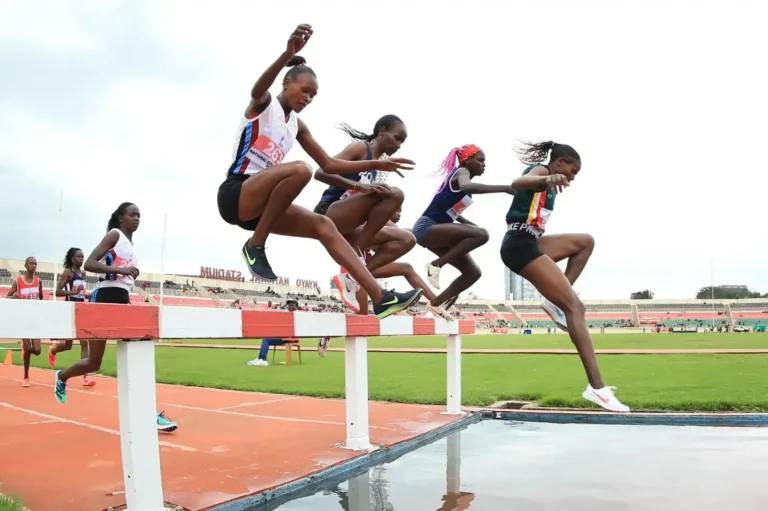Iten, a small Kenyan town of just 10,000 residents, boasts an astonishing concentration of world-class runners, including Florence Kiplagat, David Rudisha, and Faith Kipyegon.
Lots of other Kenyan runners are popular among regular sports fans and those who enjoy betting on https://22betcm.com/en_cm. What’s the secret behind this remarkable phenomenon?
Altitude Factors
An active study of the effects of altitude on the human body started in the late 19th century, but it was done for the sake of understanding the loads that would be experienced by balloonists and pilots.
Scientists could assess the impact of thin air and low pressure on athletes thanks to major events that were held at high altitudes:
The Pan American Games in Mexico City in 1955 and the Summer Olympics there in 1968 were held at 2.200-2.300 meters above sea level.
Winter Olympics in Squaw Valley in 1960 held at 2.000 meters above sea level.
In the 1970s, high-altitude expeditions in the Caucasus, Pamir, and Tien Shan gave rich material for research on the effect of altitude on the organism to Soviet scientists.
The research led to two main conclusions: the air density decreases with altitude, which positively affects aerodynamics and negatively affects the physiology of athletes. Indirect confirmation of the first thesis was a significant improvement in the results of athletes in sprint distances at the Games in Mexico City.
At the same time, the height had a negative impact on average on the final protocols in the 5.000 meters, 10.000 meters, marathon, and hurdles. The winners in these disciplines came from high-altitude countries, including Kenya.
Today, it seems logical that pre-adaptation to altitude leads to better results when participating in races at altitude. But why is this adaptation needed when starting at sea level? In the middle and high mountains, the levels of red blood cells and haemoglobin increase, which contributes to better oxygenation of muscles and, as a result, better results. But this effect is short-lived and quickly wears off when you return downhill. Therefore, runners don’t always have the opportunity to realize such “doping,” going straight down to the start.
At the same time, according to research led by Masao Mizuno, being in the middle mountains leads to an increase in the number of capillaries in the muscles, i.e., better oxygenation of the muscles. And this is already a long-term effect.
But now the “altitude factor” is actively questioned because similar results are achieved on the plain surface. So, is it the preparation that plays a greater role?
The Good Wizard
In 1976, Irishman Colm O’Connell began teaching at St. Patrick’s School in Iten. Although he had only a little experience coaching football in his home country, he led 30 Kenyans to the world championship in running. These include Peter Rono, the 1988 Olympic 1.500-meter champion, David Rudisha, two-time Olympic champion and 800-meter record holder, and many others.
According to Colm, he was taught how to coach athletes. He didn’t follow a conventional plan, always making adjustments to the current condition and character traits of his students.
Colm notes, running is inherent in man by nature. Every child loves it, and it’s part of the game. You have to keep that love alive and allow the ability itself to progress. This thinking was fundamentally different from the traditional rigid approach to training with mandatory overcoming oneself: “The greater the effort, the greater the effect.”
Apparently, not always. What do Kenyan athletes do when they’re not training? Sleep. For example, three-time world half-marathon champion Lorna Kiplagat allocated up to 16 hours a day for sleep.
In 2019, Colm’s successor, three-time world champion Wilson Kipketer, presented him with an honorary award for outstanding coaching at the IAAF Worlds Athletics Awards ceremony.
Over the years, changes have taken place in the training of many sports schools around the world. However, the dominance of Kenyan runners is almost unwavering.
The X Factor
Unpretentious food, shacks made of clay, and the absence of the main benefits from developed countries become an incentive to escape poverty and provide for the lives of their families. There are not many opportunities for this in Kenya. And one of them is the road beaten by older companions to escape.
Boys and girls strive to get into St. Patrick’s High School and get that ticket to a busy life with international starters, fame, and financial prosperity. They are ready to persevere towards their dreams; they are already studying there. Children run to school, rattling with pencil cases in their satchels. Sometimes for 5-6 kilometers. Such a run is an opportunity for them to sleep longer in the morning.
Then, at six o’clock in the morning, when the roosters are just clearing their throats, silent but determined runners take to the streets. This is how the day begins in Iten. Because of its proximity to the equator, the weather here is practically the same, and the daylight hours are the same. Maybe the secret of Kenyan runners is their stable, monotonous work and full concentration from day to day.




